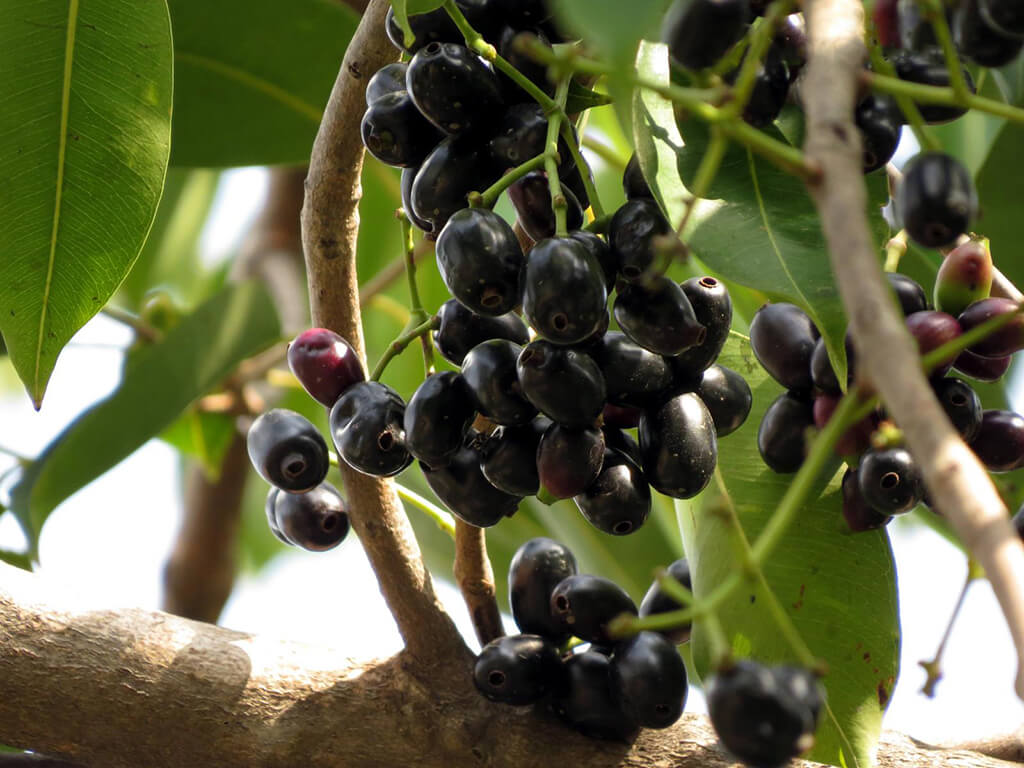Syzygium cumini
Myrtaceae
It occurs in throughout India. In foreste up to 1. 800 m usually along river bank and moist localities: also cultivated as shade trees along roadsides. It is propagated by seeds.

A medium-sized to large tree, 15-30 to in height with smooth light grey bark having dark patches.leaves simple. opposite, variable in shape. about 2.5 cm broad about 7.5-15 cm long, acuminate.nerves joining in a distinct intermarginal nerve, gland-dotted. smooth and shiny; flowers greenish-white in trichotomous panicles; fruits oblong or ovoid-oblong. dark purple with pinkish juicy pulp; one-seeded. Flowering-fruiting February to July.
Fruits contain sugars, vitamin A, B and C, mallic acid, oxalic acid, tannin, cyaniclin. etc. Seeds contain glycoside jambolin, ellagic acid. tannin. gallic acid, chlorophyll, fatly oil. calcium, starch, resin. Sugar and traces of oil. Flowers contain acetol oleanolic acid, two other triterpenoids, isoguercitin, guercetin,kaempterol and myricetin. Bark and Leaves contain tannins (ellagic acid, gallic acid), 851100810 etc.
Bark, leave, fruits. Seeds.
Bark – is astringent, sweet. sour, acrid. refrigerant, carminative, diuretic, digestive, anthemintic.febrifuge. constipating. stomachic and antibacterial. Leaves – are antibacterial, astringent,expectorant, etc Fruits – are sweet, acrid, sour, tonic and cooling. Seeds – are astringent, cooling sweet. bitter. etc.
Bark -is useful in spleen disorders. jaundice. anaemia, promote healthy pancreas. leucorrhoea, diarrhoea. menorrhagia, calculi. stomachalgia, fever, gastropathy, stomatitis. strangury and derrnatopathy..
Leaves -are used for strengthening the teeth and gums, stomatitis, diarrhoea, vomiting, leucorrhoea,promote healthy pancreas. Etc.
Fruits – are used in worms. promote healthy pancreas, diarrhoea, pharyngitis. splenopathy, urethorrhea strangury and ringworm, jaundice. liver disorders, etc. Seeds- are us. worms, jaundice. promote healthy pancreas,colic, diarrhoea, dysentery, etc.